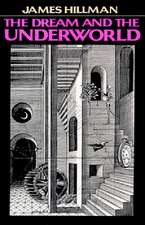Producing Games: From Business and Budgets to Creativity and Design
Autor D. Cohen, Sergio Bustamanteen Limba Engleză Paperback – 27 aug 2009
| Toate formatele și edițiile | Preț | Express |
|---|---|---|
| Paperback (1) | 247.35 lei 3-5 săpt. | +33.14 lei 5-11 zile |
| CRC Press – 27 aug 2009 | 247.35 lei 3-5 săpt. | +33.14 lei 5-11 zile |
| Hardback (1) | 990.82 lei 6-8 săpt. | |
| CRC Press – 2 aug 2017 | 990.82 lei 6-8 săpt. |
Preț: 247.35 lei
Nou
Puncte Express: 371
Preț estimativ în valută:
47.34€ • 49.24$ • 39.08£
47.34€ • 49.24$ • 39.08£
Carte disponibilă
Livrare economică 24 martie-07 aprilie
Livrare express 08-14 martie pentru 43.13 lei
Preluare comenzi: 021 569.72.76
Specificații
ISBN-13: 9780240810706
ISBN-10: 0240810708
Pagini: 304
Ilustrații: 8 black & white illustrations, 1 black & white tables, 105 black & white halftones, 9 black & white line drawings
Dimensiuni: 191 x 235 x 20 mm
Greutate: 0.64 kg
Ediția:1
Editura: CRC Press
Colecția Routledge
ISBN-10: 0240810708
Pagini: 304
Ilustrații: 8 black & white illustrations, 1 black & white tables, 105 black & white halftones, 9 black & white line drawings
Dimensiuni: 191 x 235 x 20 mm
Greutate: 0.64 kg
Ediția:1
Editura: CRC Press
Colecția Routledge
Public țintă
Professional Practice & DevelopmentRecenzii
"This book is a must-have in any game producer's library. Its in-depth coverage of game producing is invaluable insight for anyone entering the profession--and for those game producers already in the industry, it's a great reminder of how to take a game to the next level." --Kevin A. Brown, Art Development manager, Sony Computer Entertainment of America
"Whether you are a current or aspiring video game Producer or simply a student of the games industry, Producing Games is for you. Full of valuable information and advice from experienced industry insiders, this book is definitely worth your time."--Troy Dunniway, President & CCO, Dunniway Design
"Whether you are a current or aspiring video game Producer or simply a student of the games industry, Producing Games is for you. Full of valuable information and advice from experienced industry insiders, this book is definitely worth your time."--Troy Dunniway, President & CCO, Dunniway Design
Cuprins
Producing Games
Introduction: The Producer's Role (10%)
This section of the book introduces the reader to the game industry's history and how the role of the producer grew from the need to manage extremely complicated projects. A producer's day to day tasks are also introduced to place the reader, at least mentally, in the producer role. By the end of this section the reader will understand what a producer does and how they go about doing it - the remaining sections of the book expose secrets for making good decisions and strategy along the way.
Section One: Production Primer (15% of the book)
This section covers the very basics of getting started in producing games, including building the team and the work environment. It will briefly cover the different disciplines of game development, what the do, how they relate to one another and even what tools they need to do their work.
Section Two: Preproduction (30% of the book)
Game development can be broken into three major phases: preproduction, production, and finalling. The preproduction phase is the most fun, but is also the most critical phase. Creating the concept and the production plan and subsequently proving both with a playable version of the game is extremely difficult. This section will help producers really focus on what is important.
Section Three: Production (30% of the book)
The production phase is grueling, but as each week passes the game becomes more and more real. The producers role here becomes more difficult mostly because of the exploding size of the team and the incredible velocity they bring to their work. Each day down the wrong path requires multiple days to recover, and the producer must constantly monitor it all. This section will give producers an idea of what to expect and how to manage the production cycle.
Section Four: Finalling (10% of the book)
The movie industry goes through post-production, a phase where a very small team cuts and edits until their creation is exactly the way the visionaries want it. In games, this process take the bulk of the production team and a growing quality assurance team, and is a lot more like using 100 sledgehammers to put a fine details on an ice sculpture. This section covers how a team changes the way they work and how to manage the inevitable overtime to get them to zero bugs before your deadline.
Section Five: Other Things to Ponder (5% of the book)
This section is more of a grab bag of random things every game producer must know, such as how to go about choosing middleware and dealing with remote teams or multi-studio development. It also covers some of the important aspects of studio finance and the law - especially important for those that want to start up their own game development studio.
------------
Companion web site:
Game Production - Forum/Wiki: Community portal for the readership. A place for readers to interact directly with the author, each other, and other members of the computer game industry. Additional links on the site to sample project layouts and ms project macros; production forms and charts; schedule examples, planning spreadsheets and other scheduling tools.
We're looking at a similar site to that associated with his current book: Game Coding Complete: has over 900 registered members, over 5600 posts, and an average of 3,500 hits per day - the author visits this web site at least 20 times per week non-stop for over five years, and anyone posting a question has a response in a few hours. Visit this site at http://www.mcshaffry.com/GameCode/
Introduction: The Producer's Role (10%)
This section of the book introduces the reader to the game industry's history and how the role of the producer grew from the need to manage extremely complicated projects. A producer's day to day tasks are also introduced to place the reader, at least mentally, in the producer role. By the end of this section the reader will understand what a producer does and how they go about doing it - the remaining sections of the book expose secrets for making good decisions and strategy along the way.
Section One: Production Primer (15% of the book)
This section covers the very basics of getting started in producing games, including building the team and the work environment. It will briefly cover the different disciplines of game development, what the do, how they relate to one another and even what tools they need to do their work.
Section Two: Preproduction (30% of the book)
Game development can be broken into three major phases: preproduction, production, and finalling. The preproduction phase is the most fun, but is also the most critical phase. Creating the concept and the production plan and subsequently proving both with a playable version of the game is extremely difficult. This section will help producers really focus on what is important.
Section Three: Production (30% of the book)
The production phase is grueling, but as each week passes the game becomes more and more real. The producers role here becomes more difficult mostly because of the exploding size of the team and the incredible velocity they bring to their work. Each day down the wrong path requires multiple days to recover, and the producer must constantly monitor it all. This section will give producers an idea of what to expect and how to manage the production cycle.
Section Four: Finalling (10% of the book)
The movie industry goes through post-production, a phase where a very small team cuts and edits until their creation is exactly the way the visionaries want it. In games, this process take the bulk of the production team and a growing quality assurance team, and is a lot more like using 100 sledgehammers to put a fine details on an ice sculpture. This section covers how a team changes the way they work and how to manage the inevitable overtime to get them to zero bugs before your deadline.
Section Five: Other Things to Ponder (5% of the book)
This section is more of a grab bag of random things every game producer must know, such as how to go about choosing middleware and dealing with remote teams or multi-studio development. It also covers some of the important aspects of studio finance and the law - especially important for those that want to start up their own game development studio.
------------
Companion web site:
Game Production - Forum/Wiki: Community portal for the readership. A place for readers to interact directly with the author, each other, and other members of the computer game industry. Additional links on the site to sample project layouts and ms project macros; production forms and charts; schedule examples, planning spreadsheets and other scheduling tools.
We're looking at a similar site to that associated with his current book: Game Coding Complete: has over 900 registered members, over 5600 posts, and an average of 3,500 hits per day - the author visits this web site at least 20 times per week non-stop for over five years, and anyone posting a question has a response in a few hours. Visit this site at http://www.mcshaffry.com/GameCode/
Notă biografică
D.S has worked with some of the industry giants in everything from production and design, to marketing and PR, and he has been credited in more than 50 games. He runs the Classic Video Game section of About.com.
Sergio A. Bustamante II is currently producing, developing, and designing games for Brash Entertainment. Brash is a new publisher focused in on developing great games based on film IP. Currently, he is working on three unannounced titles, with some AAA developers, that will hit the store shelves in 2009 - 2010.
Prior to Brash Entertainment, he was at EA-Tiburon for two years working on Superman Returns and working in their external developers group. Before that, he was at Treyarch for almost 5 years as an Audio Director and Producer involved in hit titles like Spider-Man: The Movie Game, Spider-Man 2, NHL 2K2, NHL 2K3, and Draconus: Cult of the Wyrm.
Sergio is a veteran of the industry and has been involved in it for 14 years.
Sergio A. Bustamante II is currently producing, developing, and designing games for Brash Entertainment. Brash is a new publisher focused in on developing great games based on film IP. Currently, he is working on three unannounced titles, with some AAA developers, that will hit the store shelves in 2009 - 2010.
Prior to Brash Entertainment, he was at EA-Tiburon for two years working on Superman Returns and working in their external developers group. Before that, he was at Treyarch for almost 5 years as an Audio Director and Producer involved in hit titles like Spider-Man: The Movie Game, Spider-Man 2, NHL 2K2, NHL 2K3, and Draconus: Cult of the Wyrm.
Sergio is a veteran of the industry and has been involved in it for 14 years.
Descriere
Learn all of the game production secrets you need from two industry insiders!
















